|
|
Post by bighairyal on Aug 11, 2012 19:20:14 GMT
I think your rippled oven will help with the vermicilite, giving it something to grip to.I think given the current weather it might dry quite quickly. It certainly seems to be! The stuff I put on yesterday is already beginning to knit together, which I'm quite relieved about. Not much else to report today bar the completion of the insulating layer: 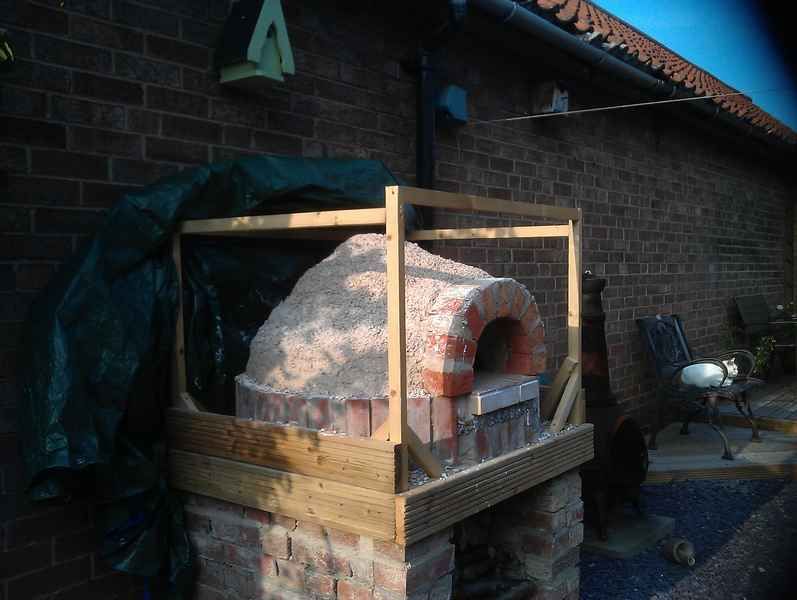 I'm fairly sure that it'll still benefit structurally (and aesthetically) from a decent coat of lime render, so will have a poke round the interweb to see how best this can be accomplished. I'm still quite confused as to the differences between hydraulic and non hydraulic limes.... |
|
|
|
Post by cannyfradock on Aug 11, 2012 20:21:38 GMT
Al
That vermecrete layer is always a bit awkward to lay on......great to see the build progressing.
I know that hydrated lime is used for our purposes, but I'm embarrassed to say that I don't know the difference between hydrated......and other lime....I'm still learning.
Terry
|
|
|
|
Post by bookemdanno on Aug 11, 2012 21:13:53 GMT
Hydraulic Limes are basically like OPC but better! Hydraulic refers to the fact that it can set underwater. Just add to sand and water like OPC but you don't need plasticiser ,or Hydrated Lime. Sharp sand is best, or part mixed with clean washed building sand. Mix for longer and the mortar is more workable and fatty. They have an initial set like cement, but slower, then get stronger with time after carbonising through reacting with the environment, by taking in CO2.
Non Hydraulic will be your Lime Putty based mortars which set through the carbonation only, and are the more traditional flexible mortars.
Hydraulic and Non Hydraulic Limes are far more flexible than OPC, breathable and can heal itself. Cracks refill with fines from rainfall and re-set within the crack.
You can even re-work the mortar the next day, there's less waste!
There are different strengths too. NHL2, 3.5 and 5.
Use the Hydraulic Lime, if your used to OPC. I'd probably go with an NHL 3.5 Lime Render.
I've built my brick Pompeii using Hydraulic Lime, and will render and Vermicrete using it in place of OPC.
Its a whole new world, the old world, and after a year of research i'm wondering why OPC is used. Lime is better for the environment, building and human health. Its just not quite as good for using in the winter, and requires a slower build. You can only lay about a 4-5ft lift of brick a day. For an oven, not a problem!
Its a little more expensive than OPC, but you waste less, and don't need the additives.
I could go on, and on! Enjoy the research, i did!
Living in an old Flint house started my looking into Limes.
|
|
|
|
Post by cannyfradock on Aug 13, 2012 7:41:43 GMT
Bookemdanno
What a fascinating insight into the different types of limes, their make-up and usages.
I have just built a Clay oven (shall post pics soon) for a community project in Raglan. I'm probably going to put a roof over it on the weekend (at the moment it has a tarp over it).....in your view is there a lime render suitable to put on clay, which will protect the oven from the elements?......If so, what type of lime and what would be the make-up of the render?
Any info would be appreciated.
Terry
|
|
|
|
Post by bookemdanno on Aug 13, 2012 21:26:34 GMT
This what i've been told Terry. Sharp Sand based Mix 3:1 with NHL 3.5 Hydraulic Lime. If you add 100grams of Magnesium Stearate per 25kg of Lime, it'll provide a waterproofing layer. But that was onto Vermicrete. I'd hazard a guess that NHL2 would be better over Cob. St.astier are the main guys for readymixed stuff, or knowledge. Here you go, one specially for Render onto Cob!  www.stastier.co.uk/nhl/guides/rencob.htm www.stastier.co.uk/nhl/guides/nhlrend.htmwww.stastier.co.uk/guides.htm www.stastier.co.uk/nhl/guides/rencob.htm www.stastier.co.uk/nhl/guides/nhlrend.htmwww.stastier.co.uk/guides.htmVery helpful guys, who are really passionate about Limes. Just drop them a line, you'll get a perfect response! |
|
|
|
Post by bighairyal on Aug 13, 2012 21:55:54 GMT
Cheers for the info Danno! This lime lark is certainly more interesting than cement, if a little tricker to get to grips with  RE: the waterproofing layer for Terry's cob oven - I'm not so sure that this would be a good idea. The reason I've gone for lime instead of cement for my unorthodox clay oven is that it's fully breathable and allows moisture from the oven to escape - if you were to make the final layer watertight you'd probably end up with a soggy & collapsing oven before too long. Well probably only if you'll be baking things like bread with the door closed and generating steam, but you get the idea. I'll be sticking with just the wooden roof over the top for weatherproofing, whilst the render itself will probably be your 3:1 sand/NHL 3.5 mix, plus the following extras: www.cemcraft.com/ADFIL_Fibrin_623_MortarRender_Reinforcement_Fibre__75g--product--177.htmlwww.cemcraft.com/Strong_White_Pigment__50g--product--50.htmlSome fibre to make the layer a little harder wearing (I'm exceptionally clumsy) and some white pigment to negate the need for painting the dome afterwards. That said, the weather has gone all rubbish again so it may be some time........ |
|
|
|
Post by cannyfradock on Aug 14, 2012 8:28:39 GMT
|
|
|
|
Post by bookemdanno on Aug 14, 2012 8:46:14 GMT
More and more I personally think that Hydraulic Lime Renders and Vermicretes are the best outer shell for a Oven, due to the way they give a route for moisture to pass out of an oven. The trick is stopping the winters rainfall getting in.
But both Lime Technology and St.Astier will definitely have a ready mixed option, when contacted.
|
|
|
|
Post by bighairyal on Aug 14, 2012 16:00:39 GMT
A turn up for the books! Used to googling around the intertubes for materials and finding the suppliers are almost always where I am not, I found this lot: www.lime-mortars.co.uk/Not but 2 minutes drive from where I'll be working tomorrow. I shall have to pop in and pick up some readymix hydraulic lime render. |
|
|
|
Post by bighairyal on Aug 19, 2012 18:19:19 GMT
Scratch coat complete: 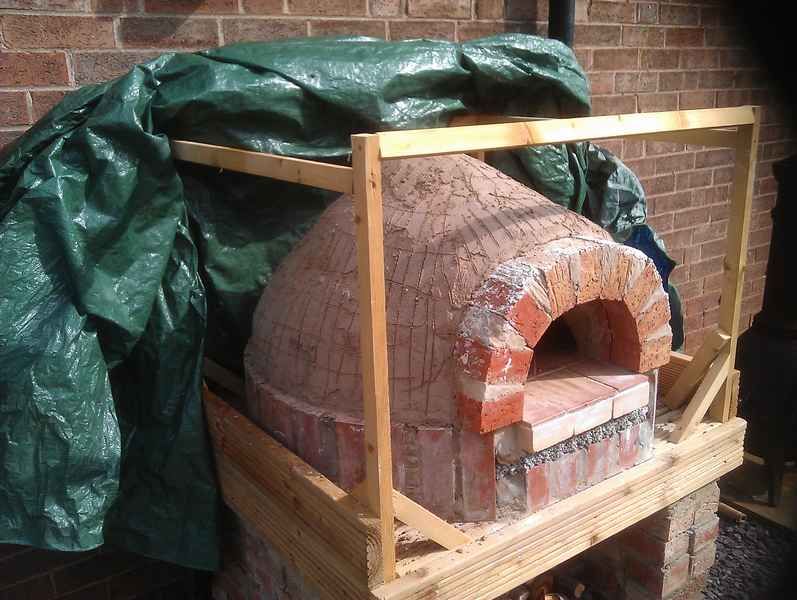 Visited the lime supply people in Teesside, and picked up some Natural Hydraulic Lime render. It has a hydraulicity of 3.5, otherwise known as 'moderately hydraulic' which means it sets 'moderately' quickly - about 3 days until it's hard and overcoatable, but a good 90 until full strength. The base render came as you see, but the finish coat (hopefully complete next week) comes ready pigmented a nice white colour. I'll see about taking a bit more care with this layer........ |
|
|
|
Post by bighairyal on Aug 31, 2012 12:06:58 GMT
Rendering finished: 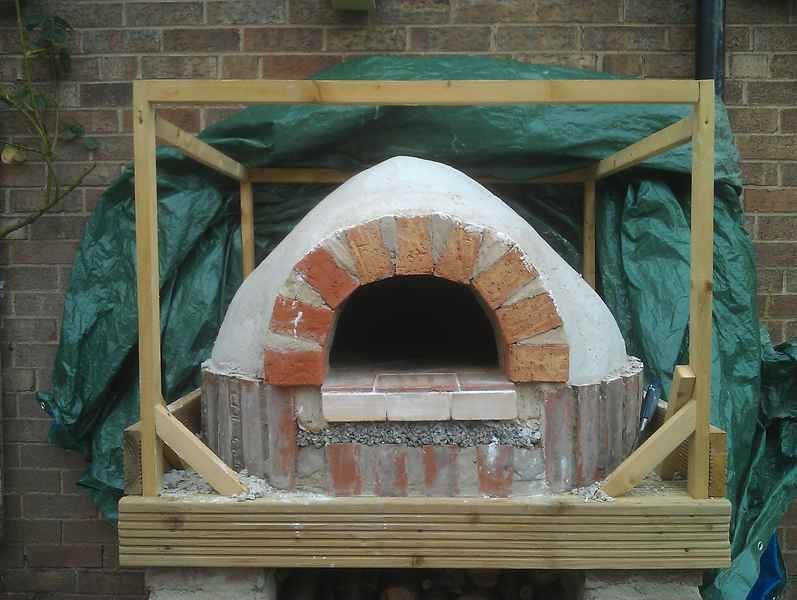 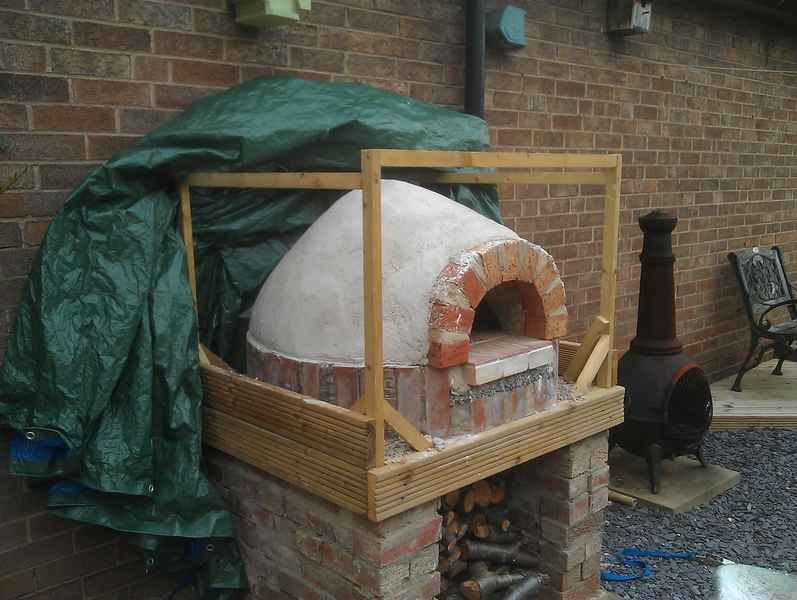 Not having rendered in any capacity before, I was pleasantly surprised by how easy it was to apply (to a DIY standard) and also by how nicely the white pigment came out. All I've to do now is to clean the oven up, render the brick base (optional) and throw a wooden roof up and over the affair. I'm hopeful that once I return home in just over a week, there shall be pizza ;D |
|
|
|
Post by cannyfradock on Sept 1, 2012 10:35:45 GMT
Al
Nice to see the dome finished. Your thread has brought out some new idea's for us to try. Please let us know how the lime render performs, once the oven is up and running......and of course......any cooking pics.
Great job...
Terry
|
|
|
|
Post by turkey on Sept 1, 2012 11:13:50 GMT
the pigments really seem to be more vivid than you initially expect, I was very surprised.
can't wait to see some food shots :-)
|
|
Tom B
WFO Team Player
  
Posts: 148
|
Post by Tom B on Sept 1, 2012 13:16:58 GMT
Lovely oven, Al, very well done. Now get it fired up and get some pizza as a reward ;D
|
|
|
|
Post by bighairyal on Nov 17, 2012 22:26:12 GMT
Greetings friends! Over two months since both my last update, and any activity on the oven....... The weather has been uniformly crap and I've been busy elsewhere, but anyway. Managed a brief spurt of workmanship earlier today: 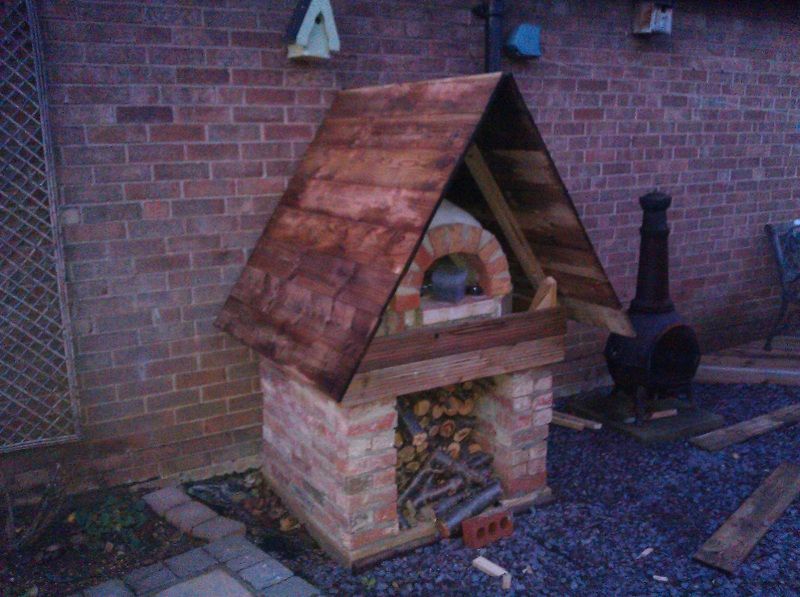 If another day of at least semi-dry weather presents itself soon, I shall trim the front overhang of the roof (currently, you have to stoop to reach the oven), waterproof it with some roofing felt and then fashion a door for front to prevent cats etc. seeking shelter inside. |
|